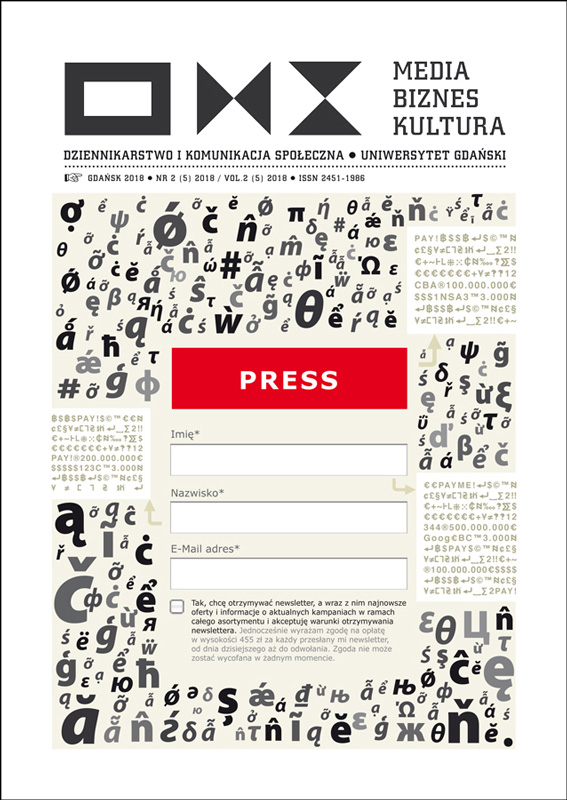Differences in communication styles between women and men
Keywords:
communication, gender, motivational speech, body of textsAbstract
The article is an attempt to check whether the way language is communicated depends on gender. For this purpose an analysis of ten motivational speeches by men and women was carried out which showed that apart from the content communicated independently of the sender’s sex (e.g. paying attention to such values as courage, talent, dreams), there are threads touched mainly by women (e.g. life balance or self-awareness), and those that are characteristic only for men (e.g. determination in pursuit of goals, effectiveness of action and professionalism). Differences between men’s and women’s communication also apply to words being used – in women’s speech there are more uncertainty indicators, which include indefinite pronouns (e.g. some, somewhere), and metatextual expressions (in English: discourse markers) (e.g. so to speak, in fact, simply), in men’s speeches, semantically expressive names prevail as well as positive ones (e.g. success, sage, knowledge, and coach). The analysis also showed that the communication differences between women and men also concern grammar. Women speak more often in the first person singular and they mainly use past tense, and men prefer third person narrative and present or future tenses.
Downloads
References
Edelsky C., Question Intonation and Sex Roles, „Language in Society” 1979, z. 8.
Handke K., Język a determinanty płci, „Język a Kultura” 1994, t. 9.
Handke K., Styl kobiecy we współczesnej polszczyźnie kolokwialnej, „Studia z Filologii Polskiej i Słowiańskiej” 1990, t. 26.
Kloch Z., Język i płeć: różne podejścia badawcze, „Pamiętnik Literacki” 2000, z. 1.
Lakoff R., Language and Woman’s Place, Harper & Row, Nowy Jork 1975.
Mosty zamiast murów, rozdział Męskie i kobiece style ekspresji, red. J. Stewart, PWN, Warszawa 2014.
Tannen D., Ty nic nie rozumiesz! Kobieta i mężczyzna w rozmowie, tłum. A. Sylwanowicz, Zysk i S-ka, Poznań 1999.
Zadykowicz A., Zróżnicowanie genderowe języka w środowisku akademickim a strategia „gender mainstreaming” w świetle najnowszych badań, „Prace Językoznawcze” 2012, z. 14.
Mikrokorpus mów motywacyjnych – podstawy transkrypcji (dostęp: 01.09.2018):
Jacek Walkiewicz, Pełna moc możliwości, https://www.youtube.com/watch?v=ktjMz7c3ke4
Mateusz Grzesiak, Jesteś wyjątkowy, https://www.youtube.com/watch?v=Omq5alY40Ow
Robert Noworolski, Żyj tak, jak chcesz, https://www.youtube.com/watch?v=mknbLtFhHBM
Piotr Cieszewski, Twój Everest, https://www.youtube.com/watch?v=hW69S5egsJk
Jakub Bączek, Cele i motywacja – niezwykle skuteczne narzędzia mentalne, https://www.youtube.com/watch?v=BQwhp9WJlOI
Kamila Rowińska, Twoja przyszłość zaczyna się teraz, https://www.youtube.com/watch?v=bkhExpMmFfA
Olga Kozierowska, Uwierz w swój osobisty kapitał – film obecnie niedostępny, PatrycjaZaług, Klucz do wewnętrznej siły – zbieraj punkty mocy, https://www.youtube.com/watch?v=IfbIXz-yxR4
Katarzyna Balcerowicz, Wynaleźć siebie, https://www.youtube.com/watch?v=uInTTDsM6Bg
Monika Górska, Możesz być lepszą opowieścią, niż myślisz, https://www.youtube.com/watch?v=CsXPECwJAME

 Academic Scientific Journals
Academic Scientific Journals




